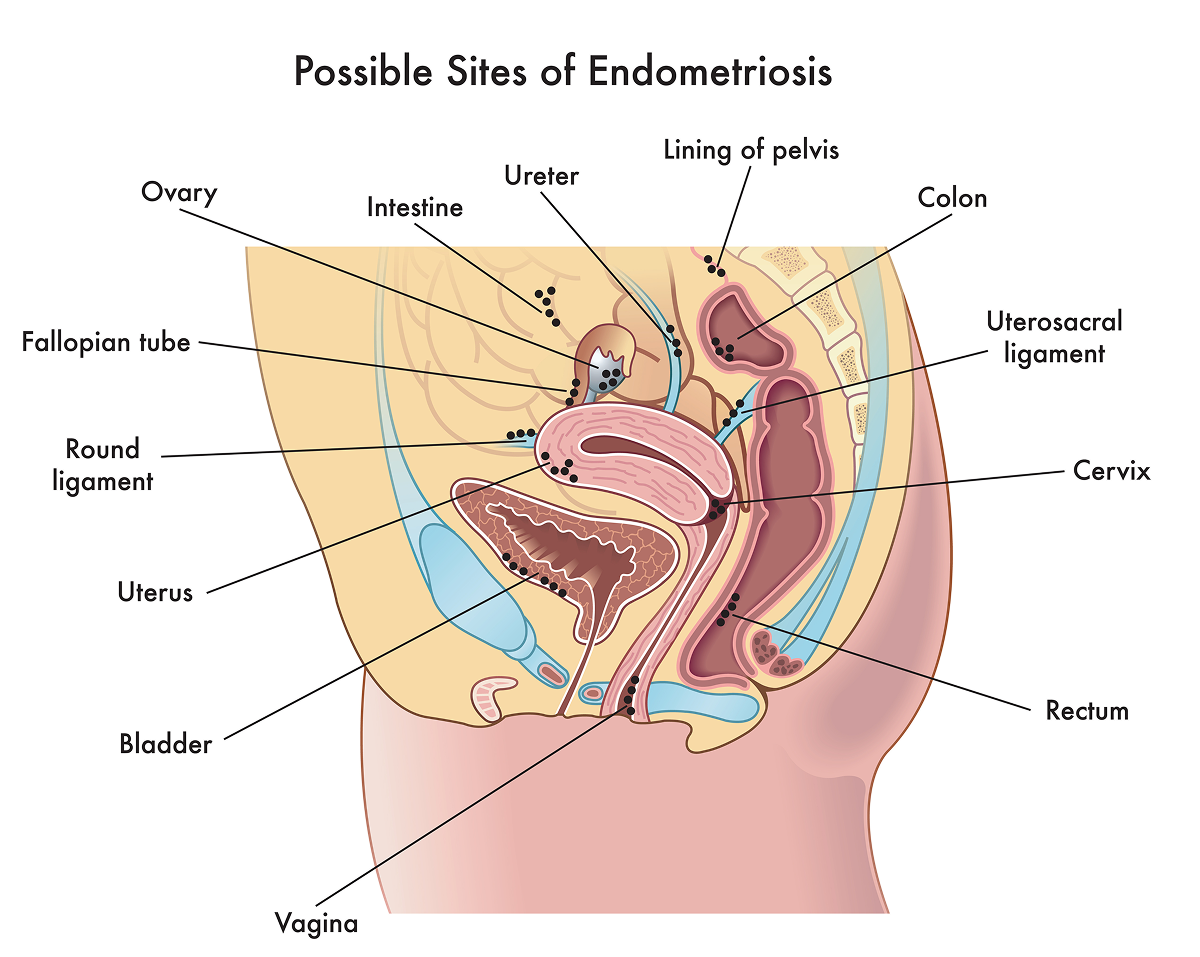Endometriosis
Request an appointmentEndometriosis is a common gynecological disease that affects the reproductive organs and other parts of the lower abdomen. Research hasn’t revealed the cause of endometriosis.
What is endometriosis?
Endometriosis is a chronic, progressive condition that causes tissues that are similar to the lining of the uterus to grow in places outside the uterus. Endometriosis tissues are sometimes called implants, lesions or nodules and sometimes grow to form cysts.
Endometriosis implants are often found on the surfaces of the uterus, ovaries and fallopian tubes. But they may also form on other body parts including the colon, rectum, bladder or even the lungs. They can also grow on the lining of the pelvis or on ligaments that support the uterus.
What are the stages of endometriosis?
The stages of endometriosis are assigned based on the number of implants, whether the implants affect other organs and other factors. The stages of endometriosis are:
- I – Minimal
- II - Mild
- III - Moderate
- IV – Severe
Your stage of endometriosis isn’t related to how bad your endometriosis symptoms are.
What kind of pain does endometriosis cause?

The image shows many places where endometriosis implants may grow within the pelvis and lower abdomen.
Pelvic pain is a major endometriosis symptom, and it may be extreme enough to get in the way of daily activities. Some people have endometriosis pain all the time. Endometriosis pain may also occur during or after:
- Menstrual periods
- Bowel movements
- Urination
- Sexual intercourse
Other endometriosis symptoms
In addition to pain, symptoms of endometriosis include:
- Fatigue and lack of energy
- Gastrointestinal symptoms similar to a bowel disorder
- Heavy menstrual periods
- Premenstrual spotting or bleeding between periods
- Irregular periods
- Trouble getting pregnant
Diagnosis of endometriosis
Diagnosis of endometriosis is based on symptoms and minimally invasive surgery to gather a biopsy. Imaging tests may also be ordered to help visualize endometriosis tissues and plan biopsy surgery.
What’s the difference between endometriosis & PCOS?
Both endometriosis and PCOS (polycystic ovary syndrome) are chronic conditions that may be related to infertility and may be treated with medications. However, they affect the body differently.
Endometriosis consists of abnormal cells growing outside the uterus on reproductive organs and other structures in the pelvis. Unlike PCOS, we don’t know what causes endometriosis.
PCOS is caused by hormone imbalances. It affects the body by causing cysts to grow on the ovaries. These cysts affect fertility by interfering with the release of eggs.
Endometriosis treatments
Endometriosis may be treated with birth control pills. Birth control pills keep hormone levels from fluctuating as much as they do during an average menstrual cycle, which sometimes improves symptoms of endometriosis.
Progestins, GnRH agonists and other medications may be used to keep estrogen levels low. They may need to be used with other medications to help control side effects.
Nonsteroidal anti-inflammatory drugs (NSAIDs) may be used to treat endometriosis pain, but they don’t reduce endometriosis growths inside the body.
Surgical endometriosis treatments
Endometriosis may be treated with certain surgeries or with a combination of medications and surgery.
Hysterectomy was used to treat endometriosis in the past, but now it’s usually used only if less invasive treatments haven’t worked.
Surgeons may recommend using minimally invasive laparoscopy to remove as much of the endometriosis tissue as possible. Laparoscopy is performed using thin tubes that are inserted through a small incision in the abdomen. One tube guides a tiny camera to the area and another tube holds surgical instruments to remove the tissue.
Open surgery may be needed when larger organs such as the colon are affected. It may also be needed to remove scar tissue formed when endometriosis has caused organs in your pelvis to stick to each other.